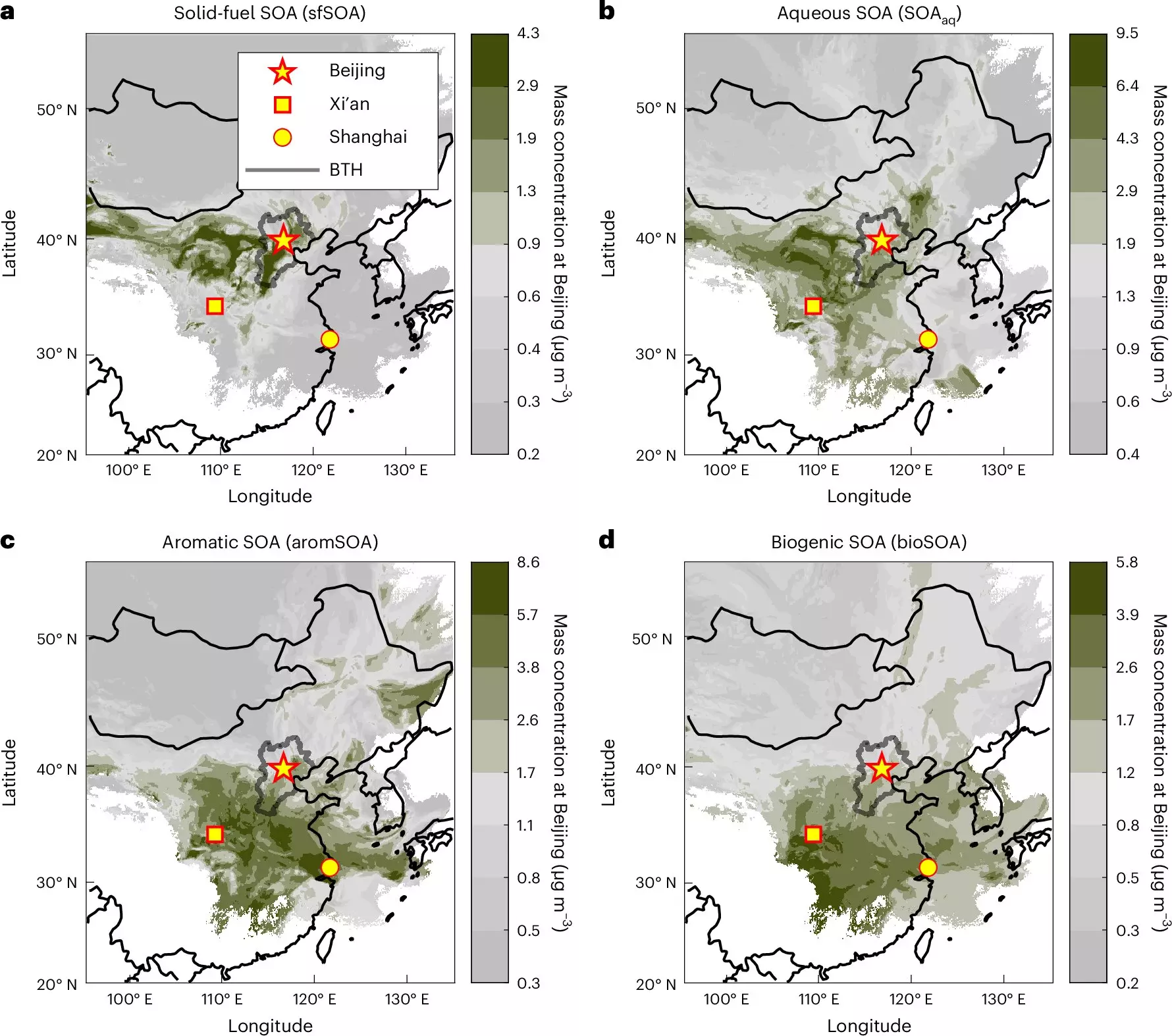Air pollution remains one of the most pressing global issues, with its impacts extending far beyond immediate health concerns. According to multiple studies, air pollution is responsible for millions of premature deaths annually, making it a critical focal point for researchers and policymakers alike. In rapidly industrializing areas like Beijing, where pollution notoriously hangs over the city, the mandates for scientific inquiry and actionable policies are more vital than ever. To effectively mitigate air quality issues, a comprehensive understanding of the origins and components of the pollutants is crucial.
Recent developments spearheaded by researchers at the Paul Scherrer Institute (PSI) and in collaboration with institutions such as Beijing University of Chemical Technology and the University of Helsinki are breaking ground in the quest for clarity in pollution sources. Led by environmental scientist Kaspar Dällenbach, the team has deployed an innovative mobile aerosol mass spectrometer that analyzes the smog residing over Beijing at an unprecedented molecular level. This advanced approach allows for a more contextual understanding of both the sources and mechanisms contributing to air quality degradation, thus representing a significant leap forward in the methodology of atmospheric science.
Dällenbach describes the significance of this method, noting that it enables researchers to unravel the intricate details of how pollutants compose the smog that engulfs Beijing. Previously, identifying the origins of these pollutants proved challenging due to the ongoing chemical transformations they undergo as they traverse the atmosphere. These transformations often obfuscate the original sources, wreaking havoc on data accuracy and interpretation.
Through painstaking observational studies conducted on the roof of the Beijing University of Chemical Technology, the researchers revealed striking distinctions in smog composition between summer and winter months. In winter, the group noted that secondary organic aerosols predominantly stem from domestic heating—specifically, the combustion of wood and coal—largely from the Greater Beijing-Tianjin-Hebei area. Conversely, during the summer months, humid air flows from the south introduce a different suite of pollutants, largely driven by urban emissions linked to transportation and industrial activity, specifically from the densely populated Xi’an-Shanghai-Beijing corridor.
Dällenbach’s findings elucidate that the origins and constituents of particulate matter extend far beyond the capital itself, making air quality in Beijing a regional concern. Each season introduces its character of pollution, requiring a multifaceted approach to source mitigation that extends across vast geographical distances.
This research underscores a fundamental reality: air pollution in metropolitan areas like Beijing cannot be effectively managed in isolation. The study’s outcomes suggest that large-scale, coordinated policies must be enacted not only within the city limits but also in surrounding regions. The transboundary nature of smog necessitates collaborative strategies that encompass broad geographical areas and a variety of industrial sectors.
Dällenbach highlights that the work performed by the team extends beyond just China, as similar methodologies are being adapted to investigate air quality issues in Europe as well as in underrepresented urban centers in the Global South. This global applicability of the research emphasizes that the struggle against air pollution is a universal challenge, where local insights may yield significant implications for global health.
As the urgency to combat air quality deterioration escalates, the implications of Dällenbach’s research cannot be overstated. By shifting the focus from merely recording pollution levels to analyzing their origins at a molecular level, researchers can lay the groundwork for more effective interventions. The insights derived from this work serve as a vital resource for policymakers seeking to implement scientifically informed strategies for reducing air pollution.
The study led by the Paul Scherrer Institute introduces a transformative perspective on how we comprehend and address air quality issues. By identifying and understanding the sources and compositions of pollutants, we can craft more nuanced and effective strategies for restoring the integrity of our environment—an endeavor that resonates far beyond the confines of Beijing, echoing a shared responsibility for our planet’s air quality.


Leave a Reply